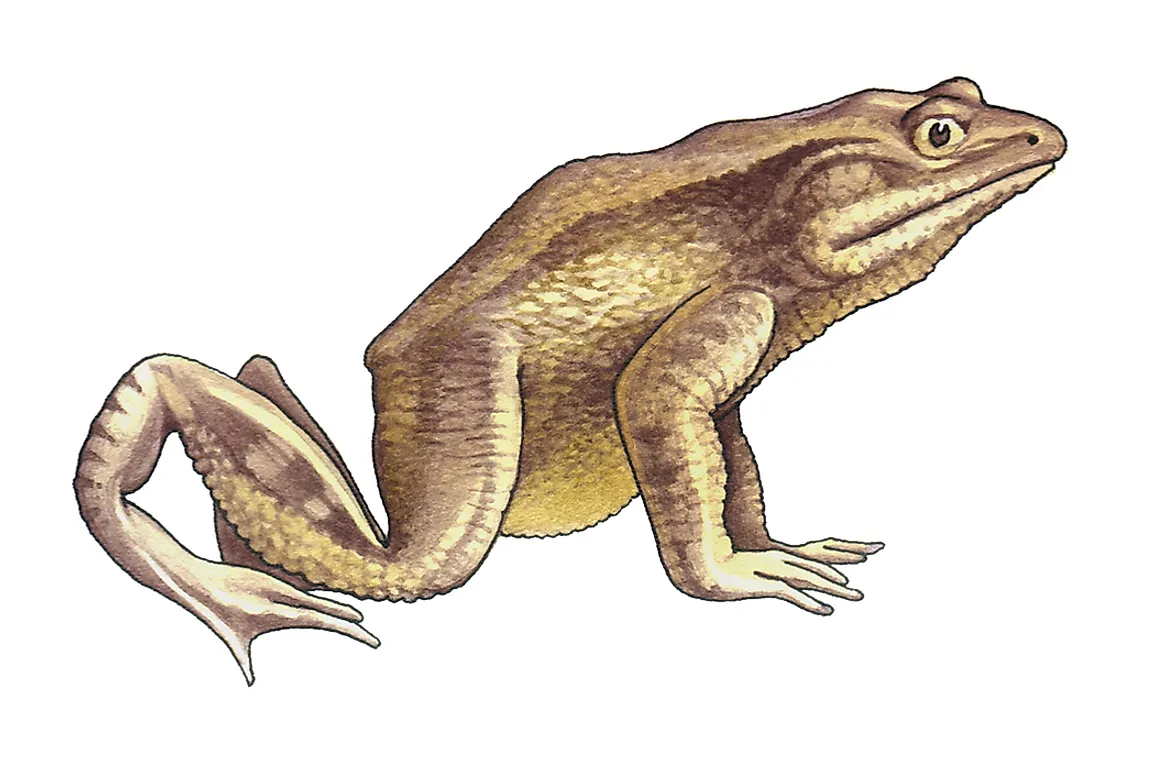What is the Largest Frog in the World?

The goliath frog (Conraua goliath), also known as the giant slippery frog or the goliath bullfrog, is the largest living frog. A typical goliath frog can grow to up to 12.6 inches and weigh 7.17 pounds. They are found in the wild in Cameroon and Equatorial Guinea.
Physical Description
The goliath frog has a granular skin with a green sienna dorsal and a yellow or orange abdomen. They lack the vocal sac and the nuptial pads. An average goliath frog measures 12.6 inches from the snout to the vent and weighs 7.17 pounds. The frog has unusually large eyes that can grow to a diameter of 1 inch. The eggs and tadpoles of the goliath frog are the same size as any other frog but the interesting fact is that the goliath frog just doesn't seem to stop growing. The frog has a fully webbed toes and a membrane that extends to the toe tip.
Habitat
The natural habitat of the goliath frog is near a fast flowing stream or river unlike other species of frogs that prefer stagnant water like swamps and ponds. They are mostly found in the rivers of Equatorial Guinea and Cameroon. The frogs are attracted to clear water with a high level of oxygen and low pollution. Outside the water, the goliath frog prefers densely vegetated environments with high humidity.
Diet
The goliath frog is herbivorous and prefers feeding on aquatic plants that grow around rapids and waterfalls. This is the primary reason why they have a limited range. Adults frogs also feed on insects especially dragonflies and locust. They also feed on small frogs, crabs, and snakes.
Lifecycle
Goliath frogs live longer than other species of frogs; their lifespan can be as long as 15 years in the wild and 21 years in captivity. They rarely die of natural causes apart from old age. A significant threat to their lives are predators such as crocodiles and large snakes. In recent years, habitat destruction and pollution of their natural habitat has limited their lifespan.
Behavior
The goliath frog lacks the vocal sack and cannot produce the mating calls typical of frogs seeking to mate. The actual reproduction takes place in water when the females produce eggs that are fertilized by males. To ensure fertilization of the eggs, the frogs assume the amplexus position that allow the female to produce eggs as the male fertilize them concurrently.
Conservation
The immediate threat to the frog is hunting because it is considered as part of the diet in Cameroon and Equatorial Guinea. The frogs have been hunted to near extinction prompting the IUCN to declare the species endangered. Conservationists are engaged in efforts with local communities to ensure that hunting is kept to a sustainable level. Many of these frogs are captured and exported to zoos annually but they have proven to be nervous in captivity. The government of Equatorial Guinea has therefore limited the export of these frogs to not more than 300 in a year.











